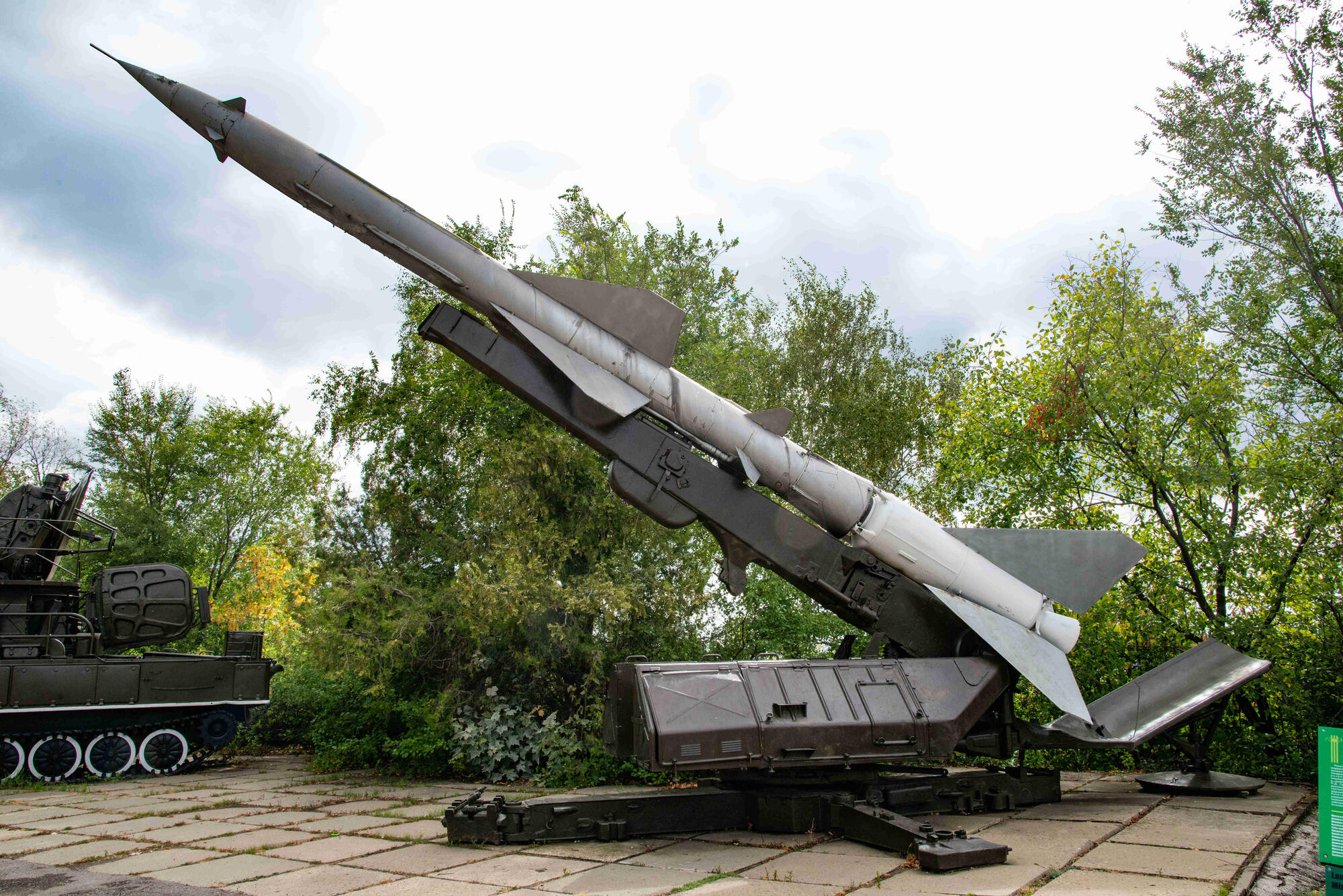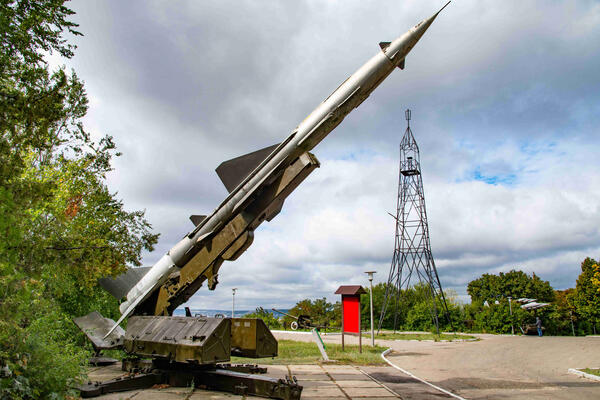The S-75 anti-aircraft missile system was a development of the stationary S-25 surface-to-air missile system. The head developer was the Design Bureau KB-1 of the Ministry of Machine Building. The project was led by Alexander Andreevich Raspletin. The S-75 entered service in 1959.
The system was designed to destroy air targets at medium and high altitudes. The rocket was developed at OKB-2 under the leadership of Pyotr Dmitrievich Grushin, and the launcher — at CKB-34 under the leadership of Boris Samoilovich Korobov.
The SM-63 single-arm launcher could fire the rockets at various angles and was fitted with tracking electric devices to guide the missile at the target location and azimuth. During combat operations, the system was controlled remotely in automatic mode. The SM-63-II launchers were produced until 1978.
The equipment of the missile system sent commands to rotate the launcher in the needed direction. To prevent soil erosion during rocket launches, the system was equipped with a blast deflector.
The use of mass-size evaluation models of missiles made it possible to train operating crews and teach them the necessary skills and ensure their effective teamwork.
When changing positions, the launchers were towed by automobile troops of brigades (regiments) using KrAZ-214 trucks. These 6×6 heavy-duty trucks could pull trailers weighing up to 50 tons.
The two-stage rocket consisted of a solid-fuel booster and a liquid-fuel upper stage. The missile was guided, and was equipped with a non-contact radar-controlled fuse. The 13D missile was capable of hitting targets at a distance of up to 34 km.
The S-75 anti-aircraft missile system was in service with the Soviet Union and the Warsaw Pact countries, as well as Algeria, Vietnam, Egypt, Iran, Iraq, China, Cuba, Libya, North Korea, the Republic of Mozambique, Syria, Mongolia, and Yugoslavia. In addition to the Soviet-made S-75, the system was manufactured under license in China (under the designations HQ-1 and HQ-2), in Egypt and in Iran.
The system was designed to destroy air targets at medium and high altitudes. The rocket was developed at OKB-2 under the leadership of Pyotr Dmitrievich Grushin, and the launcher — at CKB-34 under the leadership of Boris Samoilovich Korobov.
The SM-63 single-arm launcher could fire the rockets at various angles and was fitted with tracking electric devices to guide the missile at the target location and azimuth. During combat operations, the system was controlled remotely in automatic mode. The SM-63-II launchers were produced until 1978.
The equipment of the missile system sent commands to rotate the launcher in the needed direction. To prevent soil erosion during rocket launches, the system was equipped with a blast deflector.
The use of mass-size evaluation models of missiles made it possible to train operating crews and teach them the necessary skills and ensure their effective teamwork.
When changing positions, the launchers were towed by automobile troops of brigades (regiments) using KrAZ-214 trucks. These 6×6 heavy-duty trucks could pull trailers weighing up to 50 tons.
The two-stage rocket consisted of a solid-fuel booster and a liquid-fuel upper stage. The missile was guided, and was equipped with a non-contact radar-controlled fuse. The 13D missile was capable of hitting targets at a distance of up to 34 km.
The S-75 anti-aircraft missile system was in service with the Soviet Union and the Warsaw Pact countries, as well as Algeria, Vietnam, Egypt, Iran, Iraq, China, Cuba, Libya, North Korea, the Republic of Mozambique, Syria, Mongolia, and Yugoslavia. In addition to the Soviet-made S-75, the system was manufactured under license in China (under the designations HQ-1 and HQ-2), in Egypt and in Iran.




